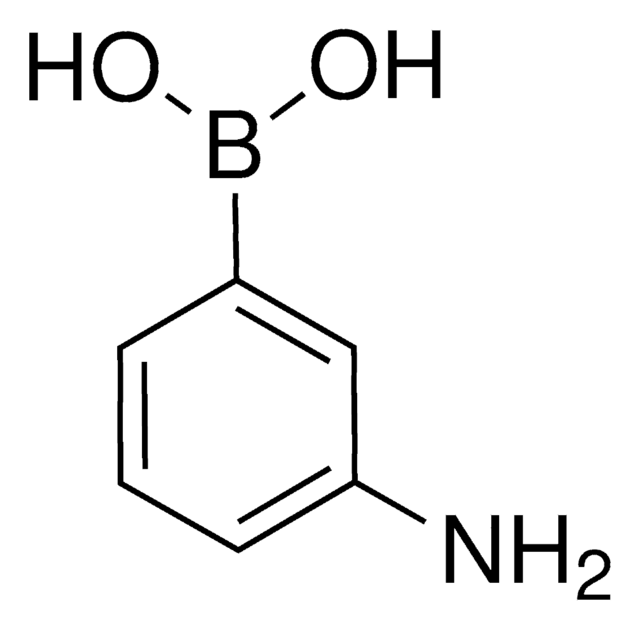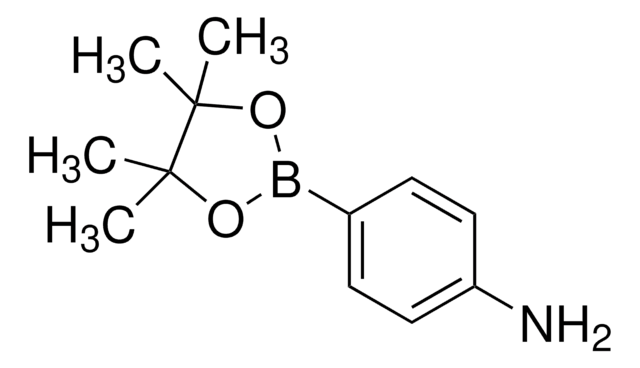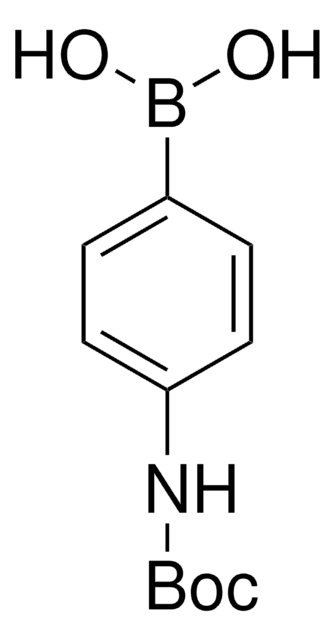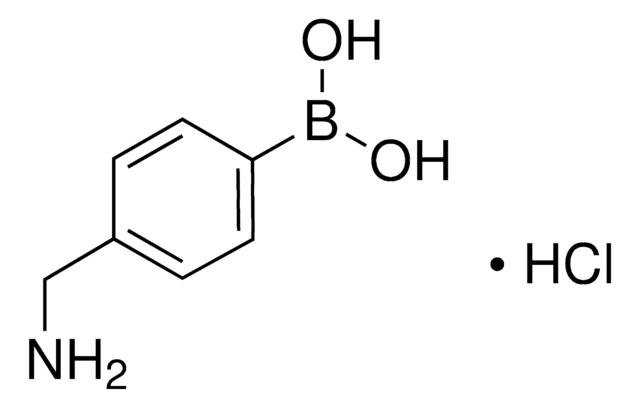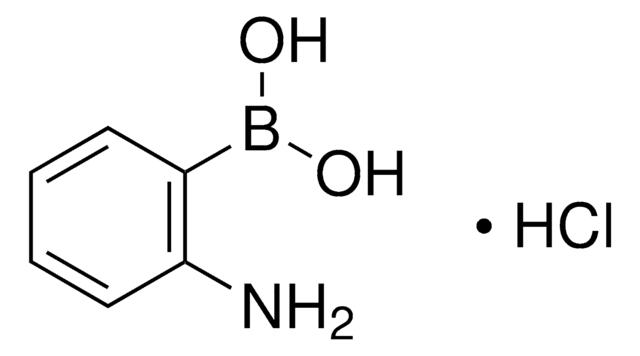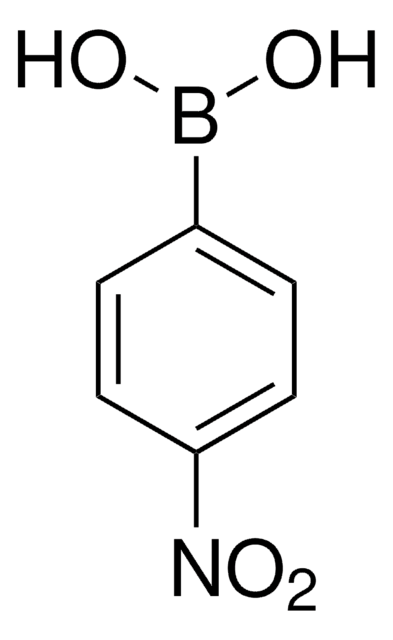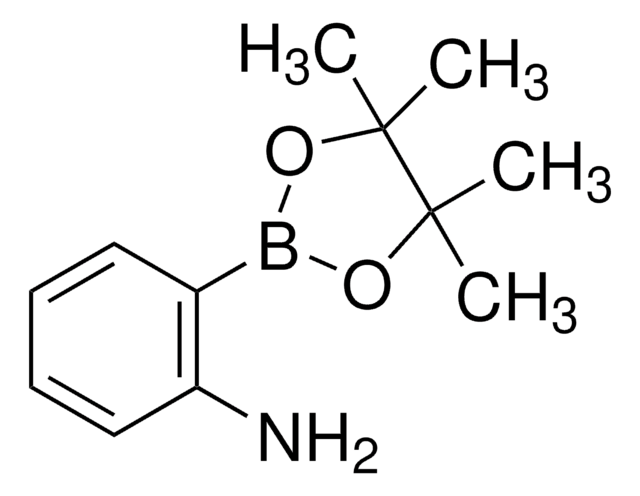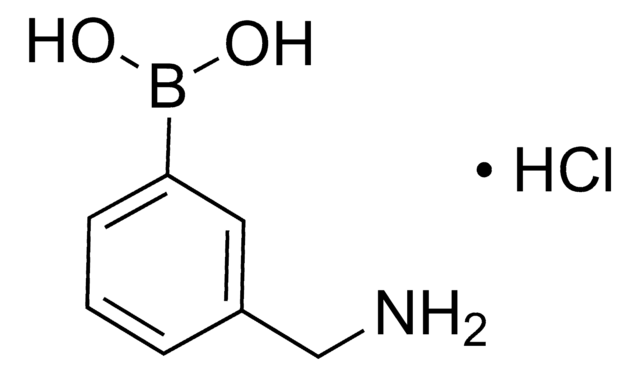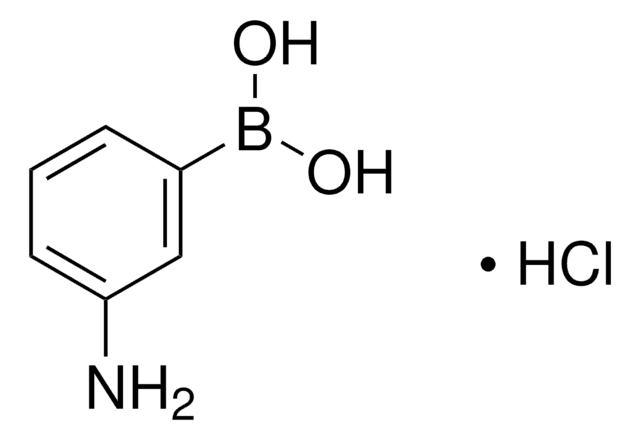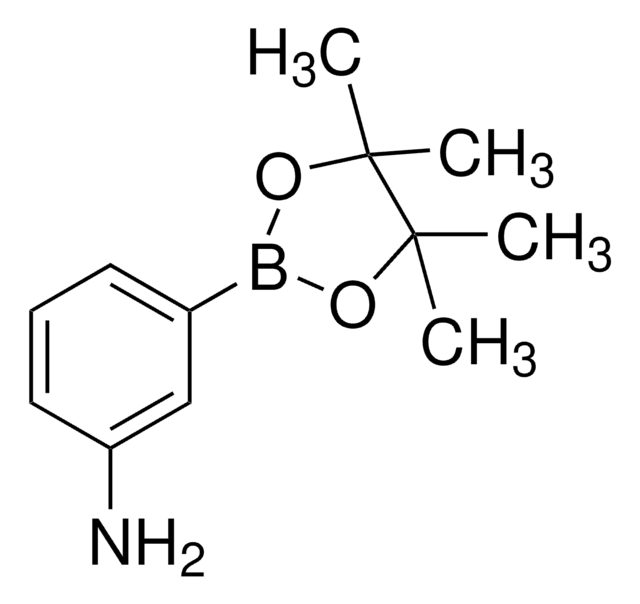708887
4-Aminophenylboronic acid hydrochloride
95%
Synonym(s):
4-Aminobenzeneboronic acid hydrochloride
Sign Into View Organizational & Contract Pricing
All Photos(2)
About This Item
Linear Formula:
C6H8BNO2 · HCl
CAS Number:
Molecular Weight:
173.41
MDL number:
UNSPSC Code:
12352103
PubChem Substance ID:
NACRES:
NA.22
Recommended Products
Quality Level
Assay
95%
form
powder
mp
195-200 °C
SMILES string
Cl.Nc1ccc(cc1)B(O)O
InChI
1S/C6H8BNO2.ClH/c8-6-3-1-5(2-4-6)7(9)10;/h1-4,9-10H,8H2;1H
InChI key
QBYGJJSFMOVYOA-UHFFFAOYSA-N
Looking for similar products? Visit Product Comparison Guide
General description
May contain varying amounts of anhydride
Application
4-Aminophenylboronic acid hydrochloride can be used to prepare:
- The modified reduced graphene composite material used as a sugar sensor to detect the analyte in fruit juice.
- The modified carbon electrode adsorbed with aminophenol, used for the detection of NADH and H2O2.
- The boron, nitrogen, and sulfur-doped carbon dot sensor, which in turn can be used for the detection of ascorbic acid.
Reactant for:
- Preparation of chromen-4-ones as DNA-dependent protein kinase inhibitors
Signal Word
Warning
Hazard Statements
Hazard Classifications
Acute Tox. 4 Oral
Storage Class Code
11 - Combustible Solids
WGK
WGK 1
Flash Point(F)
Not applicable
Flash Point(C)
Not applicable
Personal Protective Equipment
dust mask type N95 (US), Eyeshields, Gloves
Choose from one of the most recent versions:
Already Own This Product?
Find documentation for the products that you have recently purchased in the Document Library.
Qi Wang et al.
Biosensors & bioelectronics, 50, 331-337 (2013-07-25)
A sensitive electrochemical active interface for sugar sensing based on the specific boronic acid-diol binding was established. The sensing matrix was formed by stirring a suspension of graphene oxide (GO) with 4-aminophenylboronic acid (APBA). The resulting composite consists of a
Sabrina Belbekhouche et al.
Colloids and surfaces. B, Biointerfaces, 177, 416-424 (2019-02-25)
Glucose-responsive multilayer capsules have been produced through the layer-by-layer deposition of biodegradable polymers based on hydrogen bonding. The used polymers are alginate derivative and polyvinylpyrolidone (PVPON). Concentration-dependent glucose responsiveness was reached through chemical modification of alginate, selected as polyanion, with
Murugan Thiruppathi et al.
Talanta, 200, 450-457 (2019-05-01)
Non enzymatic detection of NADH and H2O2 is of practical significance for both environmental and biological prospective. However, there is no simple, straight forward electrochemical sensor available for sensing of them in real samples. Addressing this challenge, we report a
A dual-mode sensor for colorimetric and ?turn-on? fluorescent detection of ascorbic acid
Liu Y, et al.
Dyes and Pigments, 149, 491-497 (2018)
Tsan-Yu Tsai et al.
Biomaterials science, 9(3), 985-999 (2020-12-11)
Nanocomposite double-network hydrogels (ncDN hydrogels) are recently introduced to address the limitations of traditional DN hydrogels, such as the lack of diversity in the network structure and the restricted functionalities. However, two challenges remain, including the time-consuming preparation and the
Our team of scientists has experience in all areas of research including Life Science, Material Science, Chemical Synthesis, Chromatography, Analytical and many others.
Contact Technical Service